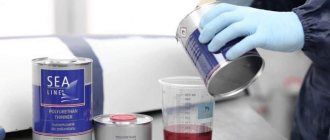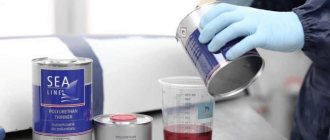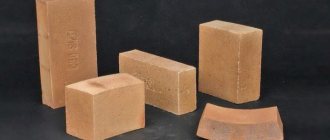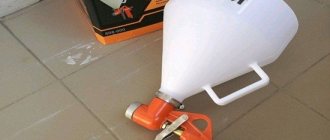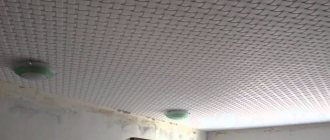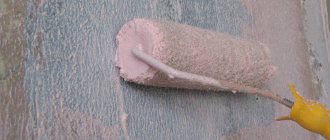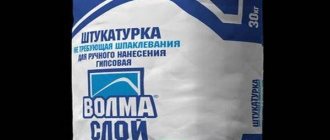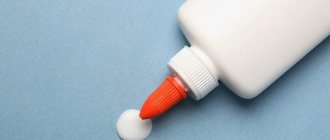Low density and light weight, excellent thermal characteristics and good sound insulation make polystyrene foam one of the most popular thermal insulation materials. Modern technologies make it possible to produce various types of foam, which differ in characteristics, cost and purpose. Knowing the differences will help you choose the optimal material for various jobs.
Polystyrene foam is, first of all, an excellent heat and sound insulator. A small layer of such a heat insulator can retain heat inside buildings even in the coldest winters. Almost everything can be insulated with this material: external and internal walls, roofs, floors and even pipelines. Due to its low weight, even a thick layer of foam does not exert a significant load on the floors, supporting structures or foundation.
Styrofoam. Basic Concepts
Polystyrene foam is a type of low-density composite material or foam, one of the components of which is a polymer and the other component is a gas.
In other words, foam is a gas-filled plastic mass. As a rule, foam plastics, unlike foam plastics, have a structure in the form of isolated cells or hardened foams. The cells consist of closed cavities that are not connected to each other and have polymer matrix walls as a separator. The difference between porous plastics and foam plastics is that the former have a spongy structure (the pores are not isolated). A system of interconnected pores is the main feature of porous plastics. Note that the definition of foam plastics and porous plastics given above is quite conditional, because in many cases, in polystyrene foam a significant number of cells are interconnected, while in polystyrene foam they can be isolated. One hundred percent can be said to be insulated only if the material consists of individual foam granules, for example, polystyrene foam, which is popular in construction. It would be more accurate to call foam plastic any gas-filled plastic that was produced by foaming an initially viscous-fluid or liquid polymer composition with further hardening of the latter.
Specifications
The popularity of polystyrene foam is due to its technical characteristics, which make it a good insulator.
In particular, this is a very low thermal conductivity due to small air cells isolated from each other by polystyrene. Foam also provides good wind protection and sound insulation, again thanks to its structure.
To ensure satisfactory sound insulation of a room, a 20-30 mm layer of polystyrene foam is sufficient, and if you make the layer even larger, you can achieve complete sound insulation.
Polyfoam has good moisture-repellent ability. Even with prolonged direct exposure to water, it repels it, and it penetrates only into interconnected cells. The material is quite durable and does not change its shape and physical properties over time.
The service life of foam plastic is determined by the correctness of its installation and the thickness of the sheet. It is a chemically stable substance that is not susceptible to acids, alkalis, water, gypsum, cement mortars, varnishes and water-based paints, such as acrylic.
Susceptible to vegetable and animal fats, organic solvents, diesel fuel, gasoline, kerosene, and alcohols. With prolonged exposure, the cellular structure of the foam is destroyed, and its complete dissolution is possible.
The undoubted advantages of expanded polystyrene are the light weight of the material, as well as the ease of its installation, it is easy to cut and convenient to use, in addition, it is non-toxic, odorless, does not cause allergies and does not generate dust.
The operating temperature range is from -60 to +95 degrees.
Production of foamed plastics
The production of foam plastics in industrial conditions involves the fact that gas is distributed in the polymer, which in this case is a semi-finished product. It can be a melt, solution, melt, dispersion, liquid oligomer, etc. Or, during the production process, gas is not added, but conditions are created for the independent release of the required volume of gas in the mass of the polymer binder. This can occur directly during the synthesis or modification of the original polymer; a striking example of such a material is PU foam (polyurethane foam).
The technological process for producing foam plastics uses a variety of methods to achieve the foaming effect; they can be divided into the following types:
- injection of gas under pressure into the polymer system;
- adding to the polymer system of chemical agents porophores or gas-forming agents, which under certain conditions decompose to release gaseous compounds;
- adding substances that release gas during a chemical reaction with each other or with other components of the system;
- mixing using mechanical devices in the presence of foaming agents or so-called “bubbling”;
- introduction of easily evaporating liquids into the polymer matrix, creating a gas phase as the temperature rises;
- other less commonly used operations.
Various methods for obtaining a foam structure make it possible to vary the properties of the finished product depending on the initial composition of the system and the curing conditions of the composition. In particular, it is possible to obtain foam with a more open or closed structure, different densities, different cell sizes, etc.
Foiled polystyrene foam
It is a mixed thermal insulation material, which is covered on both or one side with polished foil with an aluminum layer or metallized polypropylene film. Due to the metallic properties of the coating, the reflection effect can reach 97%. The choice of FPS as a solution for heated floors is considered ideal insulation. The foil layer reflects heat rays, thereby improving the insulating properties of the material. FPS is also used for insulating pipes in heating networks; thermal insulation of ventilation ducts, air ducts in ventilation and air conditioning systems; thermal insulation of walls; sound insulation between floors; used as technical insulation of process equipment.
Foam production
Machines and equipment for the production of foam plastics are divided into types, which depend on the method of obtaining the final material and the technical characteristics of the initial polymer intended for foaming.
Types of foam plastic by production method. Extruded polystyrene foam, most often polyethylene, is produced from polymer by foaming in an extruder cylinder or in elements of molding equipment. Expanded polystyrene or EPS is produced in the form of beaded granules containing low-boiling pentane, which are then treated with hot steam directly in the mold to foam.
The polyurethane foam already mentioned above is produced and processed into products by injection of a two-component mixture on special injection machines under pressure. Moreover, in this way, products are made from both soft (foam rubber) PPU and hard (pipe insulation, car interior parts), the so-called integral polyurethane foam. The components for the mixture are polyol and isocyanate, which react to release carbon dioxide. Their chemical characteristics and the ratio during injection determine the properties of the resulting products. Mixing of the polyol and isocyanate, due to their high reactivity, usually occurs in a high-pressure die just before cavity injection into the molds.
Rice. 1 Upholstered furniture is the main market for elastic polyurethane foam (foam rubber).
The simplest products made from foamed plastics can also be produced using standard machines for processing polymers, such as injection molding machines or extrusion lines. To do this, it is necessary to add special concentrates of additives of substances that decompose during the technical process, the so-called porophores, to the composition. Usually, this does not achieve significant foaming of products, corresponding savings in raw materials and improvement in the properties of the finished product, however, undesirable traces of gas escape through the polymer mass may appear on its surface - a “silvering” defect. Strictly speaking, this method produces a slightly foamed monolithic part, and not polystyrene in the classical sense.
Foam parts can also be produced by washing out the soluble filler from the plastic blank. Another rare method involves sintering powdered plastics, and is also suitable for other materials, such as some metals. Foam can also be produced by condensation structure formation, which is possible in polymer solutions. Materials related to foam plastics are obtained by adding gas-filled hollow fillers, including microcapsules of various natures, to the polymer matrix. This is how gas-filled plastics are produced.
Polyvinyl chloride
Polyvinyl chloride is a thermoplastic polymer component containing up to 56% combined chlorine. This composition makes it resistant to fire. The material is produced by pressing and non-pressing methods. Its technical characteristics are similar to extruded polystyrene foam.
Polyvinyl chloride panels do not contain toxic compounds. When open burning, they go out on their own. They have increased flexibility and elasticity, but can cause corrosion of adjacent metal structures.
Polymers suitable for foaming and blowing agents
Most known polymers can be filled with gases to produce foam plastic. At the same time, the industry produces large-scale foam plastics mainly on the basis of polystyrene (foamed polystyrene, EPS), polyethylene (foamed PE), polyvinyl chloride (foamed PVC), polyurethanes (PPU), polypropylene (foamed PP). Less commonly used are polyreactive materials, like polyurethane foam, such as epoxy, urea, phenolic resins, as well as organosilicon polymers.
Mainly, when foaming in industry, the following gas generators are used: containing nitrogen (azo compounds, nitro compounds, ammonium carbonate, etc.) and low-boiling liquids - isopentane, varieties of freon, methylene chloride.
What it is?
Penoizol is a modified polystyrene foam. Its consistency resembles marshmallow. The material is foamed plastic with a cellular structure. Modified polystyrene foam is a modern heat insulator for insulating building structures.
Often the material is prepared directly on the construction site. Using specialized equipment, the liquid mixture is used to fill voids in walls, ceilings, roofs and attics. Thanks to the production of insulation at a construction site, money, time and effort are saved on the delivery of conventional insulation and its loading and unloading operations. No additional space is required for storing thermal insulation products.
Properties of foam products
Modern industry produces elastic (soft) and hard (integral) foams with cells measuring 0.02-2 mm, up to a maximum of 5 mm. These materials have very high thermal insulation and sound insulation properties and a very low apparent density (from 0.02 to 0.5 g/cm2). Other characteristics of foam plastics, such as mechanical and electrical properties, gas permeability, water and chemical resistance, etc. depend on the chemical composition and formulation of the original polymer system and on the production method and structure of the product.
Foam parts generally do not require further post-processing. That is, the amount of waste during the production and operation of such products is low. This fact, coupled with the already stated advantages, makes polystyrene foam very attractive for manufacturers of plastic products.
Polystyrene foil mats
FPS is able to increase the overall energy efficiency of the facility, retain heat, and significantly reduce the cooling properties of the cement foundation on which the floor covering is installed due to its high sealing characteristics.
Foiled polystyrene foam with markings
The solution to the problem of creating a warm floor today is FPS profile slabs. They have high mechanical strength. On top they are covered with a rigid vapor barrier film. Their surface has a special molding, which allows for reliable and convenient fastening of heating pipes of different diameters. They are laid hermetically, thanks to the side locks, reliable adhesion of the structure is ensured, which eliminates the divergence of the seams. An additional ruler is applied to the sides of the slabs for convenient adjustment of the elements; the embossed lower surface smoothes out unevenness of the flooring and helps absorb noise.
Areas of application of foam products
The thermal conductivity of any foam materials is very low, which determines a wide range of their applications in various areas of human life.
Figure 2. A relatively new use of polystyrene foam is disposable food trays.
The described products are widely used as insulation and soundproofing material in construction, thermal insulation of pipelines, shipbuilding and aircraft manufacturing, mechanical engineering (insulation of refrigerators and chemical reactors), the automotive industry and many other areas. Polystyrene foam is used in the production of multilayer structures (sandwich panels), various floating devices, insulating sheets, and shock-absorbing pads. Foamed polystyrene has gained wide popularity in a variety of containers and packaging, including for household appliances and electronics, as well as in the form of trays for food products. A huge volume of production of elastic polyurethane foam is necessary for the production of upholstered furniture, mattresses and winter clothing. The service life of such products can reach tens of years.
Structure of expanded polystyrene
The structure and tasks for which it is used are embodied in the form in which it is produced - the implementation of this solution was the form of the slab. The slabs can be of different sizes and thicknesses, but the form itself is easy to install, store and transport.
One of the main characteristics of polystyrene that influence its scope of application is its density and thickness.
Density comes in several types, within the following limits (unit kg/m3): up to 15, from 15 to 25, from 25 to 35, from 35 to 50. Consider three densities 15, 25 and 35.
15 is the lowest. Very rarely applied to facades that are adjacent to the building. Well suited for non-residential buildings.
25 is the best choice based on the issue of price and quality. It is the most frequently used.
35 - used for insulating house facades, slopes on doors and windows; sheets of smaller thickness can be used without compromising quality. It is harder, making it ideal for basements, home foundations, and high-exposure walls.
The thickness starts at 20 mm and goes up to 100 mm in 10 mm increments; after one hundred millimeters there is a thickness of 120 and 150 mm, respectively. The most popular thickness on the market is 5 – 7 cm, which is suitable for many tasks for the most part. Sometimes it is necessary to level the wall; this result can be achieved by using a 15 cm slab, cutting it at the desired angle or in places of depressions or protrusions.
Flaws
- limited mechanical strength necessitates the formation of protection after installation;
- is destroyed upon contact with paints and varnishes and nitro paints;
- building material can be damaged by rodents, so it must be covered with substances that are less attractive to animals;
- the material almost does not allow air to pass through, which makes it necessary to equip the building with ventilation systems;
- Applying plaster to foam requires preliminary preparation to ensure better adhesion.
Do-it-yourself material recycling
If you want to know exactly how you can recycle polystyrene foam, we suggest you consider the step-by-step instructions. All you need is enough foam and a crusher. Then you can get polystyrene foam granules and use them for your own purposes. If you don’t have your own foam crusher, you can make one yourself. After all, factory models have a very high price.
Here's what you'll need to have a new useful tool on your farm:
- sewer PVC pipe, diameter 50 mm;
- tape measure and marker;
- metal file;
- a wooden beam that would fit inside the pipe;
- metal screws;
- screwdriver and drill;
- metal studs with bolts;
- Chipboard or plywood to create a box.
Using this set of tools and materials, you can create a working foam crusher. With its help, sheets or other foam crafts will turn into crumbs. The mechanism is based on a moving part with teeth, which crush the foam into granules. And thanks to the container or box, it is easier to direct the material to the rotating mechanism. You will learn exactly how to create a crusher in this video.
So, when the crusher is ready, you can start working. Here's what to do:
- Choose a suitable location. Alternatively, choose a garage, warehouse, storage room or shed.
- Install the crusher, taking care of the container underneath it, where the crumbs will fall. This could be a bucket, bag or wooden box.
- Foam sheets are easy to crush. But as for figured products, it is better to break them into pieces with your hands in advance.
- Now all that remains is to turn on our homemade unit and gradually process the raw materials.
Thanks to this technology, most of the granules will remain intact. This means that they will cope with their task better than ever. You just need to be careful, as the foam is electrified and very light. It is important to make sure that there are no drafts in the room, otherwise you will have to remove everything from the floor later. Now the foam can be collected in bags and used immediately or stored until it has its time.
Note! If you melt the foam with acetone, it can be used in liquid form as glue. Although the mixture cannot be called safe.
